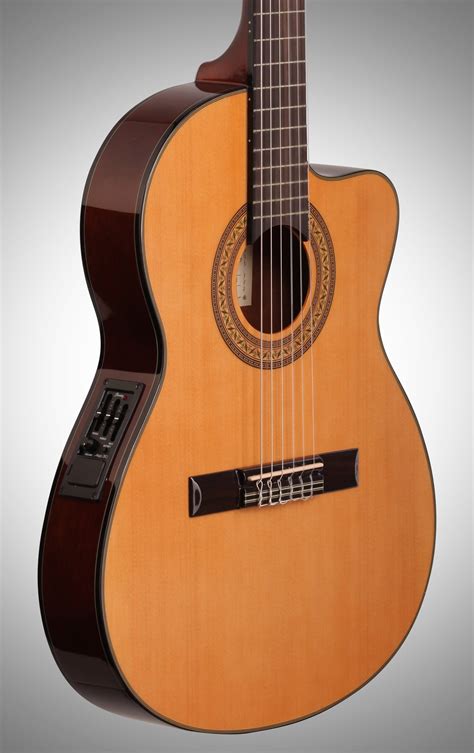For musicians seeking a rich, warm sound with exceptional playability, Ibanez classical guitars offer an excellent choice. As a domain-specific expert with years of experience in music education and performance, I can attest to the versatility and quality of these instruments. With a focus on craftsmanship and innovative design, Ibanez has established itself as a leader in the music industry, catering to a wide range of musical styles and preferences. In this article, we will delve into five essential tips for getting the most out of your Ibanez classical guitar, from setup and maintenance to playing techniques and musical exploration.
Key Points
- Proper guitar setup and maintenance for optimal sound and playability
- Development of finger independence and strength for intricate classical pieces
- Understanding of musical theory and its application to classical guitar repertoire
- Exploration of various playing techniques, including rasgueado and tremolo
- Selection of appropriate strings and accessories to enhance the guitar's tone and performance
Setting Up Your Ibanez Classical Guitar

To ensure your Ibanez classical guitar sounds its best and is comfortable to play, proper setup is crucial. This includes adjusting the action (string height) to a comfortable level, typically around 4 mm on the low E string and 3 mm on the high E string, to facilitate smooth playing without excessive finger fatigue. Additionally, the neck relief should be checked and adjusted as necessary to prevent buzzing or fretting issues. Regular maintenance, such as changing strings every 3-4 months and keeping the guitar in a stable environment, is also vital for preserving the instrument’s tone and overall condition. For instance, using a guitar humidifier can help maintain the optimal humidity level, preventing damage to the guitar’s body and neck.
Developing Finger Independence and Strength
Understanding Musical Theory and Application
A strong foundation in musical theory is essential for any serious classical guitar player. Understanding concepts such as chord progressions, modes, and scales will enhance your ability to interpret and perform classical pieces with depth and nuance. Applying musical theory to your practice routine can help you learn pieces more efficiently and improvise with confidence. For instance, recognizing the harmonic structure of a piece can guide your fingerpicking pattern choices, creating a more cohesive and expressive performance. Furthermore, studying the works of renowned classical guitar composers, such as Andrés Segovia and Joaquín Rodrigo, can provide valuable insights into the application of musical theory in classical guitar repertoire.
| Technique | Description |
|---|---|
| Rasgueado | A percussive strumming technique originating from flamenco music, characterized by a dynamic, driving rhythm |
| Tremolo | A technique involving rapid, alternating picking of a single string to produce a shimmering, tremulous effect |
| Arpeggio | A broken chord played in a smooth, flowing manner, often used in classical guitar music to add texture and depth |

Exploring Playing Techniques and Musical Styles

Classical guitar offers a vast array of playing techniques and musical styles to explore, from the expressive, melancholic melodies of Spanish music to the lively, intricate rhythms of Latin American pieces. Mastering techniques such as rasgueado, tremolo, and arpeggio will expand your musical palette and enable you to tackle a wider range of repertoire. Additionally, experimenting with different musical genres and collaborating with other musicians can enrich your playing style and foster creativity. For example, incorporating elements of jazz or folk music into your classical guitar playing can add a unique dimension to your sound, while also broadening your musical horizons.
String Selection and Accessories
The choice of strings and accessories can significantly impact the tone and performance of your Ibanez classical guitar. Selecting strings that match your playing style and the guitar’s specifications is crucial; for example, nylon strings are typically preferred for classical guitar due to their warm, mellow sound. Additionally, using a high-quality guitar support or footstool can improve your playing posture and reduce fatigue during long practice sessions. Other accessories, such as a metronome or a guitar tuner, can also be invaluable tools for refining your technique and ensuring precise intonation. Furthermore, investing in a good-quality guitar case can help protect your instrument from damage and maintain its overall condition.
What is the ideal action height for a classical guitar?
+The ideal action height for a classical guitar is typically around 4 mm on the low E string and 3 mm on the high E string. However, this can vary depending on personal preference and playing style.
How often should I change my classical guitar strings?
+It's recommended to change your classical guitar strings every 3-4 months, or as needed, to maintain optimal tone and playability.
What are some essential techniques for classical guitar playing?
+Some essential techniques for classical guitar playing include finger independence, strength, and dexterity, as well as mastery of techniques like rasgueado, tremolo, and arpeggio.
In conclusion, owning an Ibanez classical guitar offers a world of musical possibilities, from the intimacy of solo performance to the richness of ensemble playing. By following these expert tips and dedicating yourself to practice and musical exploration, you can unlock the full potential of your instrument and enjoy a lifelong journey of musical discovery and expression. Remember, the journey to mastering the classical guitar is just as important as the destination, and with patience, persistence, and passion, you can achieve your musical goals and create a lasting legacy of beautiful music.

